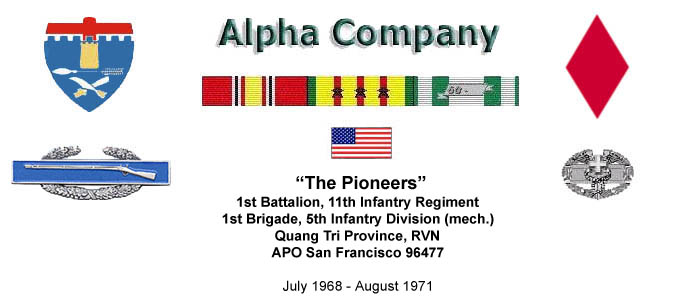|
|
|||||||||||||||||||
|
|||||||||||||||||||
|
|
|||||||||||||||||||
|
(Numerous online sources, including societyofthefifthdivision.com) |
|||||||||||||||||||
|
More information from Keith Short on Lam Son 719 please click here. |
|||||||||||||||||||
|
|
|
||||||||||||||||||
|
LAM SON 719 was a large offensive operation against NVA communications lines in Laos in the region adjacent to the two northern provinces of South Vietnam. The operation was a raid in which ARVN troops would drive west from Khe Sanh on Route 9, cut the Ho Chi Minh Trail to sever the supply lines for Communist forces in South Vietnam and Cambodia, seize Tchpone, Laos, about 25 miles away, and then return to Vietnam. The ARVN would provide and command the ground forces, while US Army and Air Force would furnish aviation airlift and supporting firepower. The 101st Airborne Division (Airmobile) commanded all US Army aviation units in direct support of the operation. Most of the first part of the operation, begun 30 January 1971, was called Operation DEWEY CANYON II, and was conducted by U.S. ground forces in Vietnam. The ARVN met their halfway point on 11 February and moved into position for the attack across the Laotian border. On 8 February, ARVN began pushing along Route 9 into Laos. The NVA reacted fiercely, committing some 36,000 troops to the area. The ARVN held its positions supported by US airstrikes and resupply runs by Army helicopters. President Nguyen Van Thieu ordered a helicopter assault on Tchepone. The abandoned village was seized on 6 March. Two weeks of hard combat were necessary for the ARVN task force to fight its way back to Vietnam. On 7 March 1971, then WO1 Randy Ard, who had been in Vietnam only a few weeks, was assigned as the pilot of an OH-58A helicopter on a transport mission. He picked up Lt. Col. Sheldon J. Burnett, Squadron Commander, Capt. Phil Bodenhorn, Company Commander of A Company, and artillery FO, Lt. Jerry Castillo. Their destination was A Company's 3rd Platoon that was located approximately two miles from the Vietnamese/Laotian border, and 15 miles southeast of Muong Xepon, Savannakhet, Laos. As the helicopter approached the position of the 3rd Platoon, WO1 Ard radioed for the platoon to signal with smoke when the Kiowa came over the landing zone. Yellow smoke was sighted and the pilot nosed the aircraft down toward the smoke. When they were between 250 and 300 feet above the ground, it was struck in the lower front of the helicopter by a long burst of machine gun fire causing them to crash inverted. Capt. Phil Bodenhorn and Lt. Jerry Castillo were not injured in the crash. They pulled Randy Ard from the aircraft. He had both legs broken, his hip was believed to be crushed and he suffered several bullet wounds. Sheldon Burnett was pinned in the wreckage and could not be moved During the next 20 to 25 minutes Capt. Bodenhorn and Lt. Castillo continuously radioed for help and signaled with smoke while they remained under direct and indirect enemy gunfire. As the enemy was about to assault their position, the two uninjured survivors were forced to leave WO1 Ard and Lt. Col. Burnett as they took evasive action. When they left the wreckage, Randy Ard was alive and armed with a .45 caliber pistol. Sheldon Burnett was bleeding badly from wounds to his head, neck and arms, and was speaking incoherently. They evaded the enemy and were able to link up with an ARVN unit about an hour later. Because of continued enemy activity in and around the crash site, no ground search was possible. Both Randy Ard, Sheldon and Bodenhorn were immediately listed Missing in Action. The story of this loss incident was released to reporters at Khe Sanh three days later. The army spokesman accurately described the ambush and downing of the helicopter, however, he told the press that "Lt. Col. Burnett had been in radio contact with the ambushed platoon, and that he and Ard had appeared dead to the two escaping officers" whose names were withheld. Further, in a blatant attempt to mislead the press, General Sutherland stated, ". . . the decision was not made to employ the Air Cavalry and the Hoc Bao to attempt to retrieve either Lt. Col. Burnett alive or his body . . . Burnett had no mission nor units in Laos. He had no reason or authority to take his helicopter over the Laotian border." Sheldon Burnett and Randy Ard were among nearly 600 Americans who disappeared in Laos. Many of these men were known to be alive on the ground. The Laotians admitted holding "tens of tens" of American Prisoners of War, but these men were never negotiated for, either by direct negotiation between our countries, or through the Paris Peace Accords which ended the War in Vietnam. Laos was not a party to that agreement. Burnett and Ard's remains were recovered and subsequently returned to the United States in early 2005. Additional information may be found at: flyarmy.org (dead link)
|
